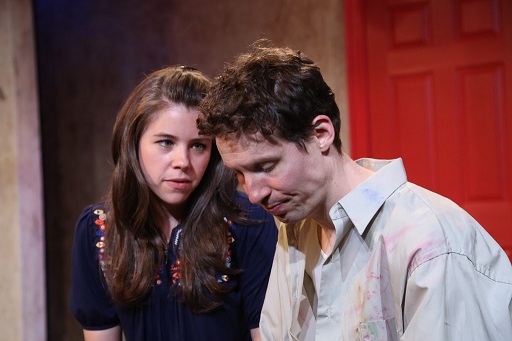If you’ve ever wondered, “Where is God when tragedy befalls a good person?” then “Believers,” Ken Jaworowski’s tense drama, might be your kind of play.
Believing in a deity who refuses to step in has been a timeless topic ever since The Book of Job posited, “Why do the righteous suffer?” More recently, Harold Kushner tackled this issue in “When Bad Things Happen to Good People” [1981]. When Rabbi Kushner’s son Aaron [1963 —1977] was born with a cureless disease, his first response was, “Why, God? Why me?” God is a hot topic with the two teenagers who start the play on the campus of a Christian college. When Donna says she is a theology major with a minor in philosophy, it seems natural to suppose this 19-year-old is better equipped than most to find solutions and take comfort in spirituality. She explains to the guy she’s flirting with that she once prayed to God to foil her rapist; the fortunate outcome, seen as divine intercession, caused her to become a Christian.
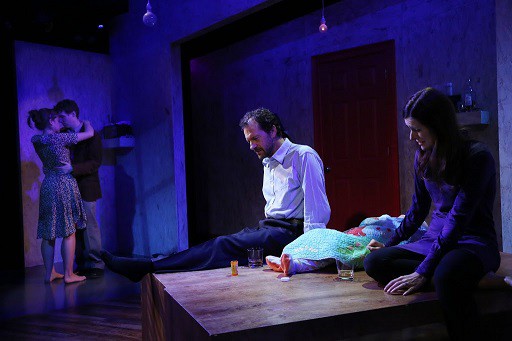
The script toggles back and forth, presenting a young couple, Christian and Donna, during the 1990s (portrayed by Ben Sumrall and Allison Linker), then twenty years later (portrayed by Tony Travostino and Mary Lauren). The newlyweds subsisted on a diet of spaghetti and tolerated a crummy walk-up when Christian was bent on winning an art competition and Donna toiled as a low-paid counselor. After scoring this prestigious prize, Christian accepts a corporate job, stops painting, and upgrades their lifestyle. Alas, twenty years later, when the couple tries to start a family, the unthinkable happens.
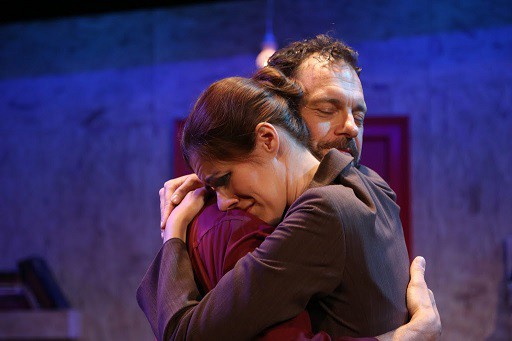
The first scene is the best. The tension is realistic, playful, and engaging. Christian should not be in her dorm room, but he is. Donna, adorned with a crucifix and garbed in a dainty white dress, alternates between tempting and rebuking him until they both give in.
All the 1990s scenes are hopeful, looking forward to better times, whereas the present day scenes spiral downward into inexorable sadness and despair. By alternating past and present, scene after scene, the playwright attempts to keep his audience engaged. But the two halves don’t complement each other.
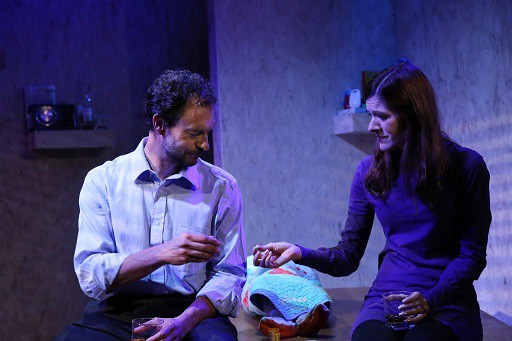
Moreover, there’s little dramatic tension in the 1990s scenes; despite their poverty and lack of options, the couple does not argue. They are unfailing polite, considerate, united in their goals. The struggle the artist is going through never seems to exasperate his wife. If there are no conflicts, what’s the point of these scenes?
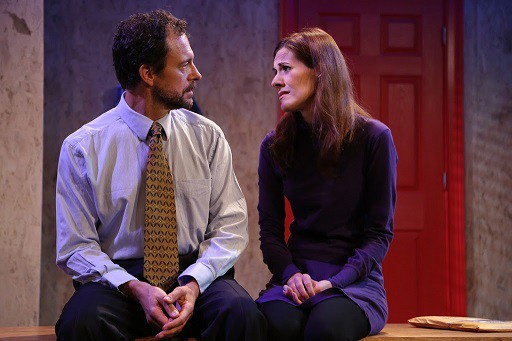
Curiously, there’s even less dramatic tension during the present day scenes; powerless in the face of misfortune, the couple merely reacts to it. When the wife reveals her horrifying “final solution,” the husband protests only slightly before agreeing to it. Except for an external force that causes misery, their relationship is so harmonious it makes you yawn.

Perhaps aware of this, Jaworowski occasionally manufactures false tension. For example, there’s an odd moment, after Donna gives birth, when her husband insists on starting a college fund for Christian Jr. for “when he goes to Harvard.” Out of nowhere, Donna challenges him, insisting her son will not go there. Since it’s weird for her to be in such high dudgeon over the word Harvard — — and who picks a fight over tuition in the delivery room? — — it falls flat.
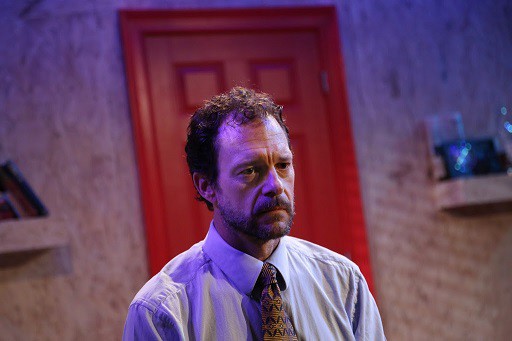
From January 15-17, 2015, three workshop performances of this play (then titled “Christian”) were presented with Katie Braden, Allison Linker, Ben Sumrall, Tony Travostino. Since Mr. Sumrall has been with this role for some time, it was surprising to see how flat his performance was. Being a painter with no income caused no agitation. However, as the older Christian Hodges, Mr. Travostino fully embraces the part; there is a pause and a hesitation to his words that shade the tormented man in fascinating ways. As young Donna, feisty Allison Linker drives each scene she’s in, using her physicality well. Sadly, Mary Lauren’s performance, which should rightly break your heart, is brittle; she speaks the language of woe but its nuances are missing.
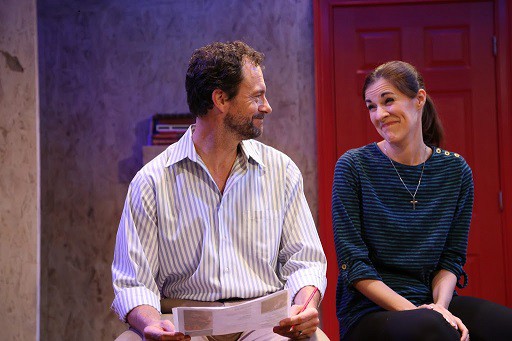
The spare set, with matching wooden benches, served its purpose, although there was no visual distinction between the roach-infested walk-up young Donna jokes about and the ritzy condo the older couple nests in. The masterpiece Christian creates on his easel is never seen.
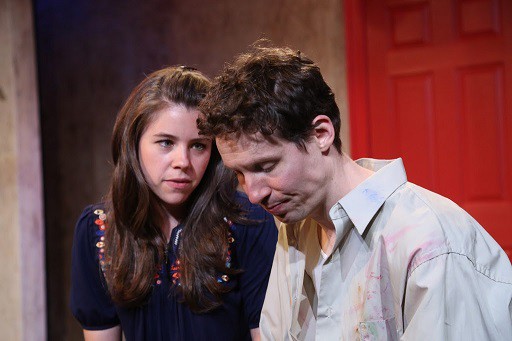
Despite having a developmental workshop, “Believers” feels like a work-in-progress that is hinting at something that could carry intellectual weight and a stronger emotional charge. Though the situation intrigues, the characters are too insubstantial and far too agreeable to keep our interest. The dialogue, though sometimes clever, is anemic and the crucial questions about faith and believing are merely waltzed around.

Director Alex Dmitriev keeps the pace going. Costume designer Catherine Siracusa makes some interesting choices. Since playwright Ken Jaworowski is a staff editor for The New York Times, look for a good review there.
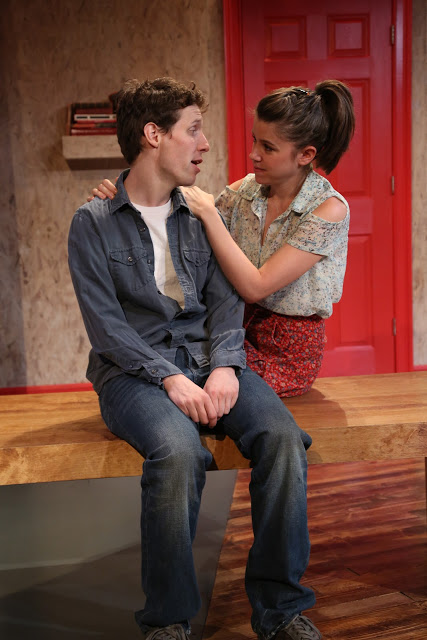

— — — — — — — WorkShop Theater, 312 West 36th Street, New York, NY will present the play’s world premiere run from September 25 to October 17, 2015 directed by Alex Dmitriev. — — — — — — —


